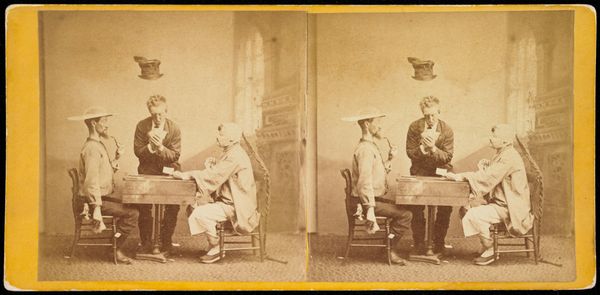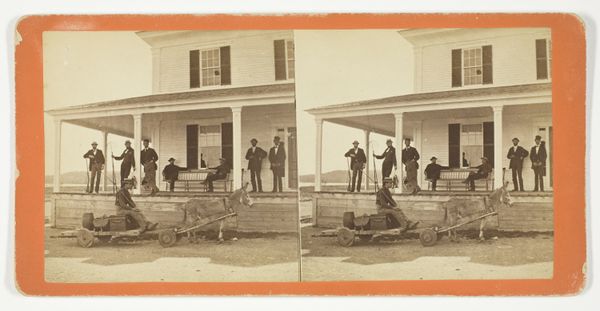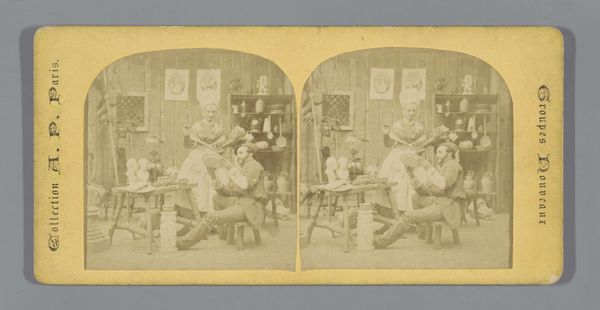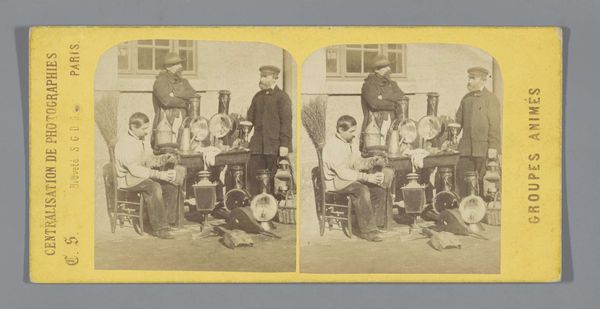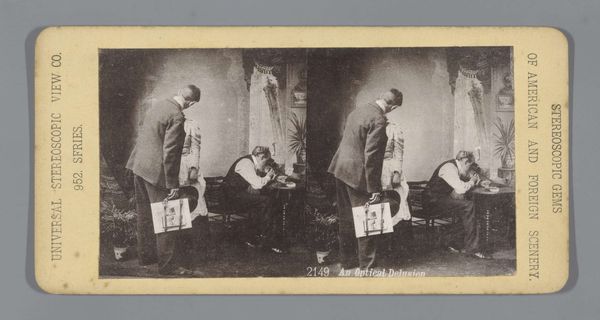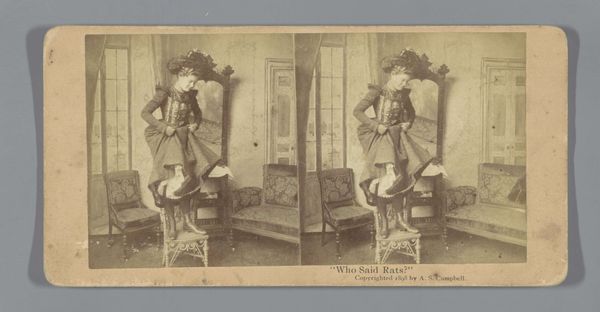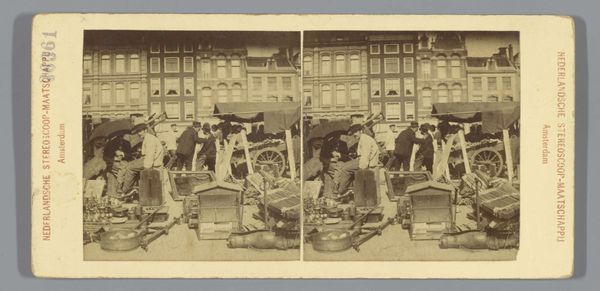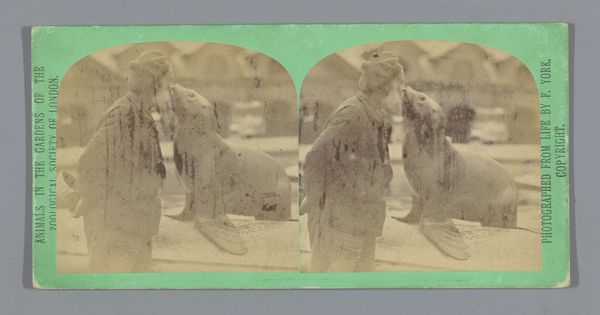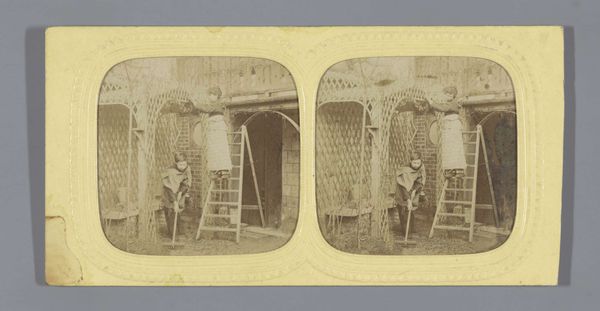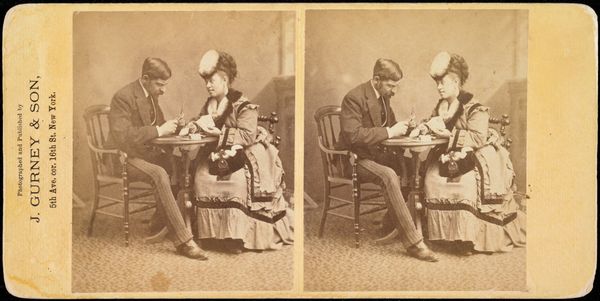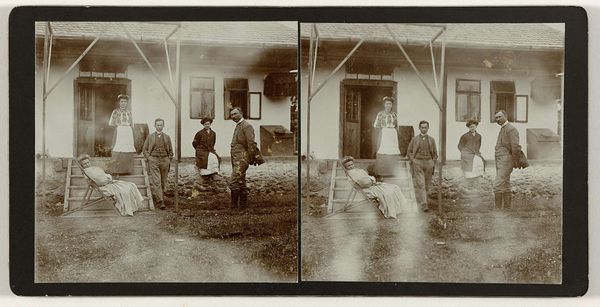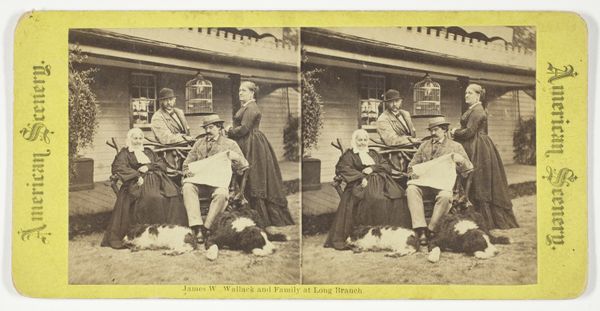
photography
#
portrait
#
16_19th-century
#
narrative-art
#
photography
#
orientalism
#
history-painting
#
academic-art
Dimensions: 3 1/4 x 5 13/16 in. (8.26 x 14.76 cm) (image)3 7/16 x 5 7/8 in. (8.73 x 14.92 cm) (mount)
Copyright: Public Domain
Curator: Jeremiah Gurney's "Heathen Chinese No. 7," taken between 1869 and 1874, is what we might call a staged photograph, now part of the Minneapolis Institute of Art's collection. What's your first impression? Editor: It strikes me as incredibly unsettling. The sepia tones give it an antique feel, but the scene itself... it feels aggressively performative. The central figure is positioned on the floor while others hover with swords and various expressions of mockery. The overall staging is obviously and deliberately anti-Chinese. Curator: Indeed. It's a loaded image. You can feel the theatricality of it, a sense of performance gone horribly wrong, almost vaudeville in its clumsy attempts at humor but really based on blatant racist caricatures. Gurney, better known for his portraits, ventures into something far darker here. Editor: Absolutely. This photograph participates in what we now recognize as orientalism—a Western fantasy projected onto Asia. This goes hand-in-hand with the anti-Chinese sentiment prevalent during the period. The 1870s were marked by the Chinese Exclusion Act, setting the tone for this pervasive xenophobia that continues today. The photograph attempts to narrativize that discrimination. Curator: The props amplify that unsettling theatricality. The clothing appears vaguely "Chinese," though clearly from the costume box. This concocted authenticity, the inauthentic representation posing as real... it’s chilling how artificial the setup looks now. Editor: Precisely. And that’s where it becomes powerful—as a historical artifact revealing the biases of the time. Looking at how the 'victim' is positioned and 'oppressed' with such clear artifice gives the modern viewer an immediate sense of its purpose. The racial stereotyping serves as a harsh reminder of our shared past, and one that should inspire more than feelings of shame. We should work to deconstruct how it permeates contemporary cultural narratives, politics and economics, as it remains highly racialized. Curator: Ultimately, “Heathen Chinese No. 7” compels us to reflect on photography’s role in shaping perceptions and perpetuating harmful stereotypes, making us see how the shadow of that era stretches far too close to our present. Editor: Yes. It’s a deeply uncomfortable, necessary confrontation. The image doesn't just show the past—it screams a warning for the future, a call for constant vigilance.
Comments
No comments
Be the first to comment and join the conversation on the ultimate creative platform.
